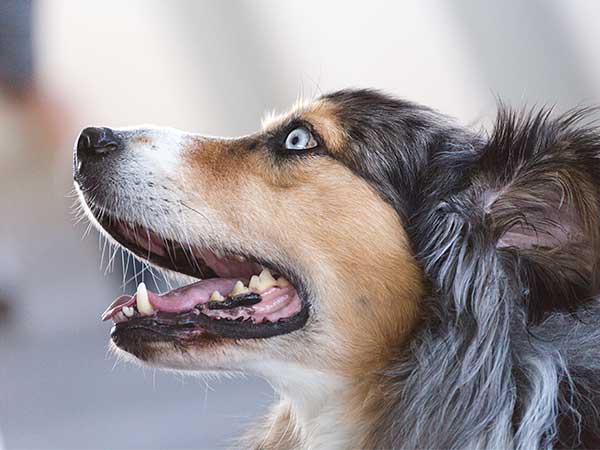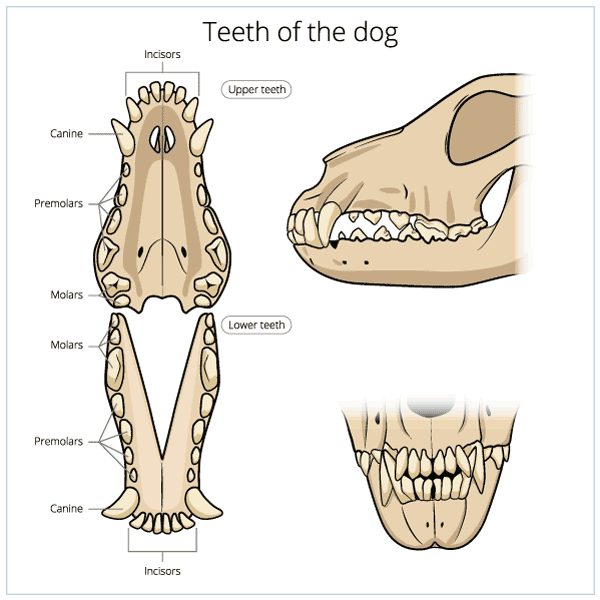
What To Do About A Dog Tooth Infection
A dog tooth infection is a very common and very painful condition. As with humans, periodontal disease can lead to infection and, in some cases, a painful abscess. Because dogs can't tell us when they are in pain or discomfort, it may be difficult to know about an infection before it develops into an abscess. But once you do determine that your dog is experiencing an infection, it is important to get treatment from a veterinary dentist.
Of course the best way to avoid an infection is to always engage in proper dental care. Check your dog's teeth regularly for any serious signs of trouble and make sure to brush them regularly. Always use a plain brush or a brush with toothpaste designed specifically for dogs. You do not want to use human toothpaste on dogs, as it can contain substances that may make your dog sick.
Giving your dog bones or dog chew treats![]() like Dentastix
like Dentastix![]() or Greenies
or Greenies![]() , designed to help clean the teeth is also a good idea, but you need to be careful about letting your dog chew on hard surfaces or play tug of war with his teeth too often, as this can lead to damage and potentially to dog tooth infection. This is a particular concern for Australian Shepherd owners, as Aussie's tend to be more energetic and more prone to rough and tumble activities like these.
, designed to help clean the teeth is also a good idea, but you need to be careful about letting your dog chew on hard surfaces or play tug of war with his teeth too often, as this can lead to damage and potentially to dog tooth infection. This is a particular concern for Australian Shepherd owners, as Aussie's tend to be more energetic and more prone to rough and tumble activities like these.

Shane / stock.adobe.com
If your dog does develop an infection, you may not realize it until it develops into a painful abscess. This is when a pocket of pus develops around the site of an infection. It can leave the area swollen and extremely painful. Aside from facial swelling, which may be obvious, there are other signs to look out for that may signal a tooth abscess.
Signs Of A Dog Tooth Infection
Signs of abscess include bad breath, loose teeth, a visibly broken or discolored tooth, inability to chew and a buildup of plaque on the infected tooth. If your dog will only chew on one side of his mouth or he drops food entirely this is a sign that he is experiencing pain that makes chewing uncomfortable. He may also incessantly scratch the side of the face where the dog tooth infection is as a reaction to the pain he's feeling.
If you do suspect an infection or abscess, you should take your dog to the vet as soon as possible because the quicker it is treated the less the likelihood that it will spread to the face, eyes or other parts of the body. Your vet will probably prescribe an antibiotic and anti-inflammatory if swelling is present but the only real way to treat infection is with a root canal or extraction of the tooth.
The route you take in treating a dog tooth infection will depend on your dog's age and overall health and your own financial means. Tooth treatment can be expensive but it is vital to maintaining good overall health. It's important to remember that dogs can manage just fine after losing a tooth, even the large upper tooth called the carnassial that is a big part of the chewing mechanism, so there is no need to worry about your dog being debilitated.
Dental issues are an unpleasant fact of life for both humans and their four-legged counterparts, but you can help to prevent a dog tooth infection by providing regular dental cleaning and not letting your dog do too much chewing on hard surfaces. And if a problem does develop be aware of the signs and get your pup to the vet as soon as possible and you'll both be smiling brighter.

Alexander Pokusay / stock.adobe.com
Have Dog Training Questions?
Check out these introductory dog training videos...
I want my dog to stop being aggressive.
I want some help training my new puppy.
I want my dog to stop barking at everything.
Get Australian Shepherd Info, Website Updates, Special Offers, and Cartoons...
FREE GIFT
You'll also receive a free copy of the ebook
My Everyday Dog Training Tools
by professional dog trainer Daniel Abdelnoor, "Doggy Dan"











 Loading Image...
Loading Image...